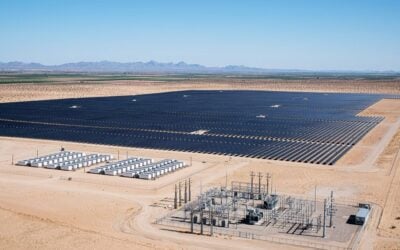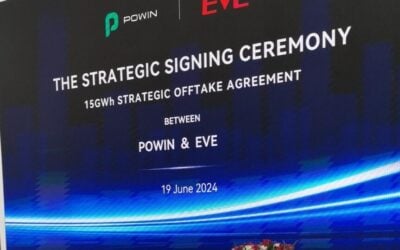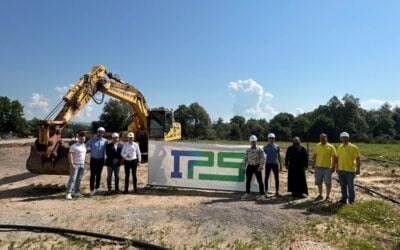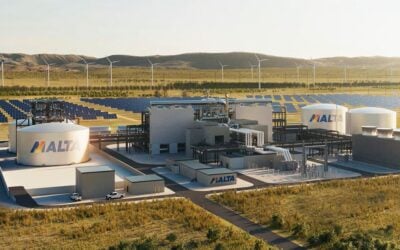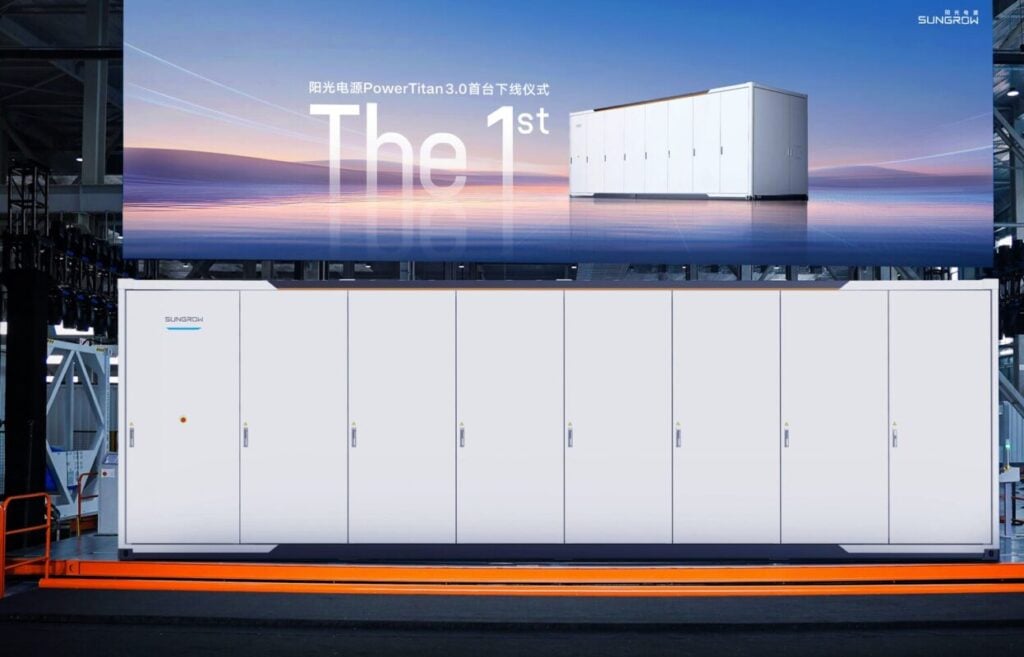
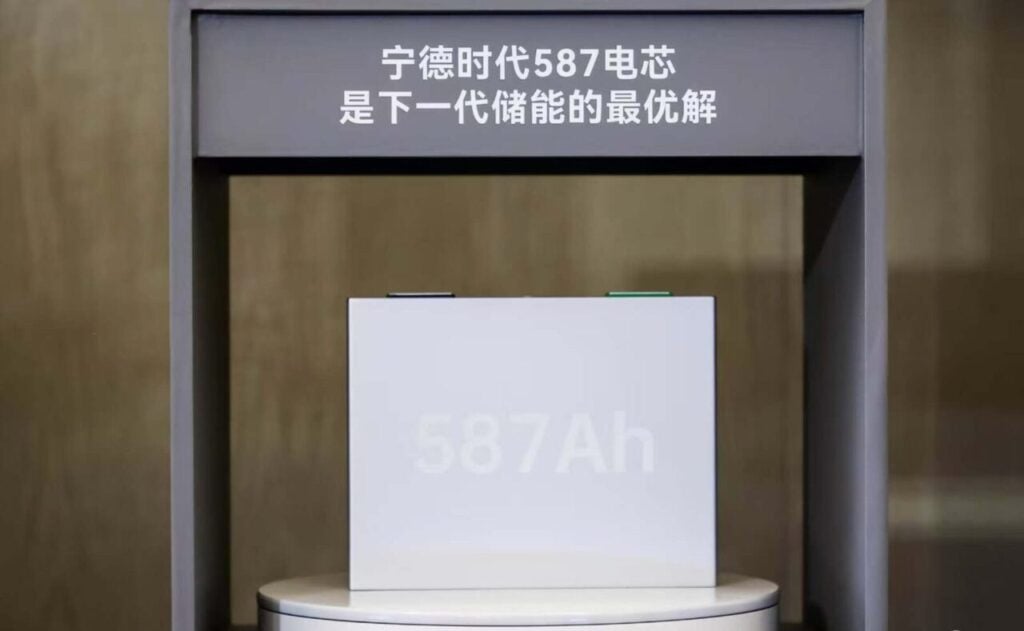
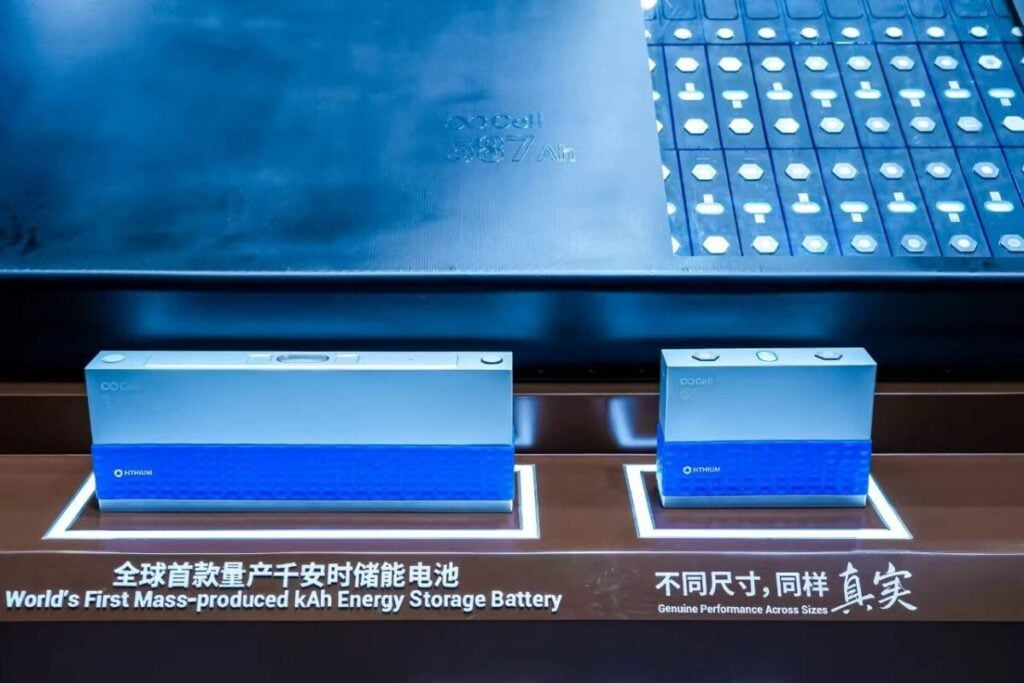
Carrie Xiao reports back from SNEC, the world’s biggest solar PV and energy storage trade show, where large-format lithium cells took centre stage.
The SNEC PV & ES International Photovoltaic & Energy Storage (2025) Exhibition took place in Shanghai, China, and concluded on 13 June. This year’s exhibition saw participation from over 120 Chinese energy storage companies, which unveiled hundreds of new storage products and solutions. Among them were more than 20 large-capacity cells, covering capacities such as 392Ah, 472Ah, 587Ah, and 684Ah.
Enjoy 12 months of exclusive analysis
- Regular insight and analysis of the industry’s biggest developments
- In-depth interviews with the industry’s leading figures
- Annual digital subscription to the PV Tech Power journal
- Discounts on Solar Media’s portfolio of events, in-person and virtual
From the initial 280Ah and 314Ah to the increasingly prevalent 500Ah+, each new generation surpasses the last in size. What market insights do these new products reveal? And what new industry trends do they showcase?
New generation cell technology race: From 314Ah to 500Ah
Through the products showcased by various companies at this year’s exhibition, Energy-Storage.news noted that as China’s mandatory storage allocation era came to an end and the National Development and Reform Commission’s “Document No. 136” officially took effect, the energy storage industry is transitioning from price-based competition to a value-driven model.
Against this backdrop, storage companies have launched a new round of technology competition centred on next-generation storage cells.
First, the race to define third-generation battery storage cells has taken centre stage. Two industry giants, Sungrow and CATL, each unveiled flagship offerings. CATL, a pioneer in cell technology, and Sungrow, a leader in system integration, are now locked in a fierce competition over third-generation large-capacity cells.
| Mainstream vs. Next-Gen Cell Parameters | |||
| Category | 314Ah | 587Ah | 684Ah |
| Dimensions (LxWxH) | 174.4×71.7×207.2(mm) | 286×73.5×216.3(mm) | 501.5×55.5×175.5(mm) |
| Cell production process | Winding | Winding | Stacking |
| Energy Density(WH/L) | 395 | 434 | 440 |
| Efficiency | 95% | 95.50% | 96.50% |
| 20-ft Container Capacity (MWh) | 5 | 6.25 | 6.9 |
(Above) Comparing mainstream vs next-generation cells.
On 11 June, Sungrow showcased nearly 30 new energy exhibits at SNEC PV Expo 2025, spanning three major sectors: energy bases, zero-carbon parks, and zero-carbon homes. Notably, the company unveiled its PowerTitan3.0 intelligent storage platform for the first time, specifically designed for large-scale energy storage power plants.
Just before the exhibition (5 June), Sungrow officially launched the PowerTitan3.0 at its smart factory headquarters in Hefei, thereby defining the 684Ah cell as the core of its next-generation large-capacity technology roadmap. This 684Ah cell more than doubles the capacity of the current mainstream 314Ah cell, setting a new industry record for mass-producible large-cell capacity.
It is reported that the new-generation energy storage platform breaks the constraints of fixed container sizes by introducing a series of products: the 10-foot Flex version, 20-foot Class version, and 30-foot Plus version, with duration ranging from 2-hour to 12-hour.
The Plus version, with a record-breaking single-unit capacity of 12.5MWh, adopts a 684Ah laminated cell design. It achieves the world’s highest volumetric energy density of over 500kWh/m³, a cycle life exceeding 15,000 cycles, and a gravimetric energy density of over 440Wh/L.
“Sungrow does not advocate innovation for innovation’s sake, nor do we engage in flashy ‘PPT marketing’ that sounds impressive but lacks substance. We only pursue innovations that make clear economic sense for our customers,” said Xu Qingqing, Vice President of Sungrow and President of its Energy Storage Division.
As industry competition intensifies and cell capacities continue to scale up, some companies even promote products exceeding 1000Ah. However, the market is rife with exaggerated claims, as many of these large-capacity cells have yet to enter mass production.
Just five days later (10 June), CATL announced in Shanghai the mass production and delivery of its next-generation large-capacity storage cell, the 587Ah model. By leveraging the industry-standard 20-foot containers and 1500V PCS voltage/power specifications, CATL reduced the total number of system components from 30,000 to 18,000 while increasing energy density by 10% to 434Wh/L. The system energy density saw a 25% improvement, and the initial round-trip efficiency (RTE) during charge-discharge cycles reached 96.5%.
In line with Sungrow’s stance, CATL also emphasises mass production and delivery capabilities. Zheng Yelai, Co-President of CATL’s Market Division and General Manager of its Zero-Carbon Energy Business Unit, stated that the 587Ah cell went through three years of R&D and testing, delivering tangible performance, reliability, safety, and delivery assurance to present real value to storage customers.
As the most significant technological advancement in the energy storage industry, large-capacity storage cells are rapidly reshaping every segment of the energy storage supply chain. The rationale behind large-capacity storage cells involves two key aspects: on one hand, meeting the trillion-dollar market demand for long-duration energy storage (LDES) with 4-8 hours or even longer storage durations; on the other hand, achieving cost reduction, improving efficiency, and extending cycle life through increased capacity.
During the exhibition, HiTHIUM announced the mass production of the world’s first kiloampere-hour (kAh) long-duration energy storage cell, the ∞Cell 1175Ah.
Designed specifically for 4-8 hour long-duration energy storage applications, this product boasts advantages of “ultra-large capacity, ultra-long lifespan, ultra-high safety, and ultra-low cost,” filling the market gap for specified cells in mid-to-long duration energy storage scenarios.
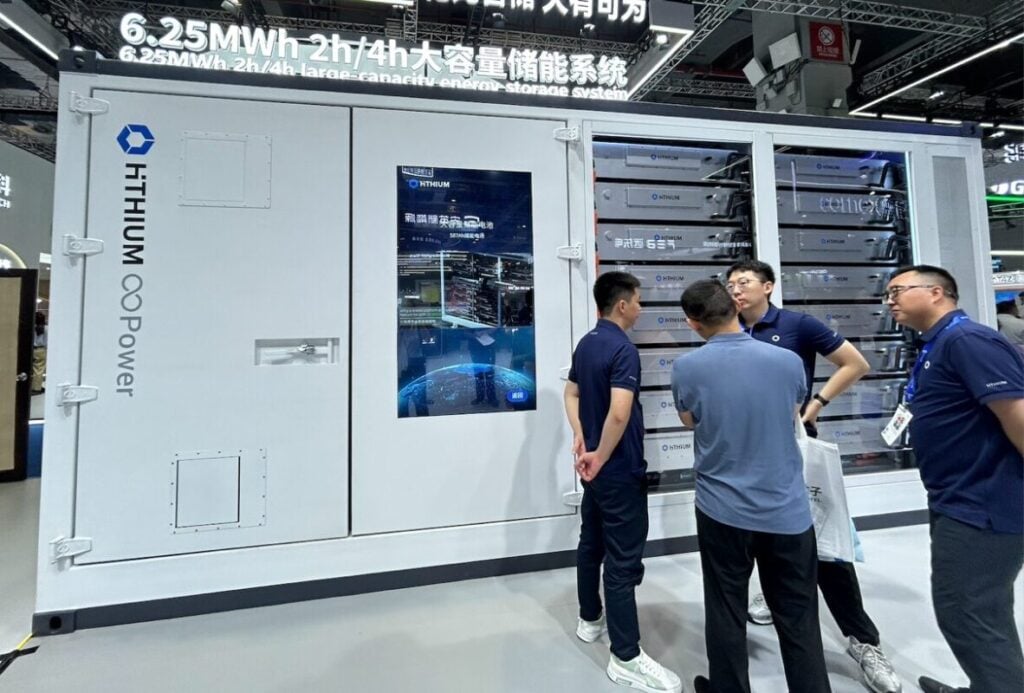
Regarding cell capacity, other companies including EVE Energy, CORNEX, SVOLT, REPT BATTERO, Narada, Shoto, Trinasolar, GCL Energy Storage, and JA Solar also showcased ultra-large-capacity cells exceeding 500Ah at SNEC 2025.
Cells have not only grown in capacity but also reached new highs in energy density. For instance, SVOLT’s 770Ah cell reached an energy density of 435Wh/L. Similarly, JA Solar’s next-generation intelligent energy storage system, ‘BlueGalaxy 4.0,’ based on 500Ah+ large-capacity cells, enables a 20-foot container to reach a 7.8MWh capacity (compatible with 6.25MWh), representing a 38.84% improvement in volumetric energy density over the previous generation.
In addition to Sungrow’s highly integrated energy storage system, Gotion introduced its 20MWh QianYuan Intelligent Energy Storage System, and BYD showcased its MC Cube-T Pro BESS 6.4MWh product. Several companies also unveiled integrated energy solutions, including Huawei’s FusionSolar 9.0 intelligent string-type PV-storage solution and Risen Energy’s all-scenario PV-storage solution.
Look out tomorrow for the second part of Carrie Xiao’s special report from SNEC 2025. It will focus on the blurring of boundaries between technologies used in the commercial and industrial (C&I) and utility-scale storage market segments and how BESS manufacturers are handling the safety aspects of increasing cell sizes and energy density.

